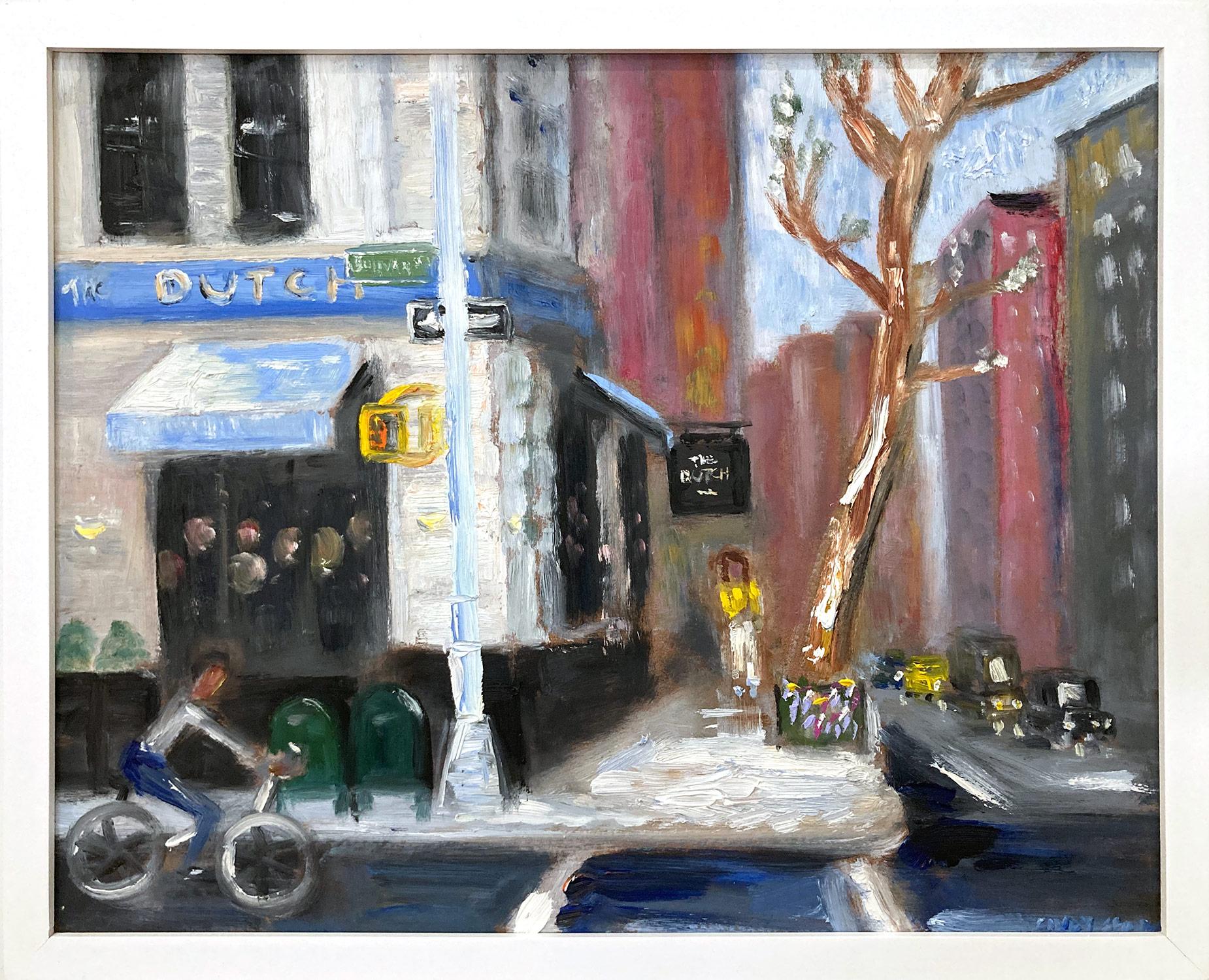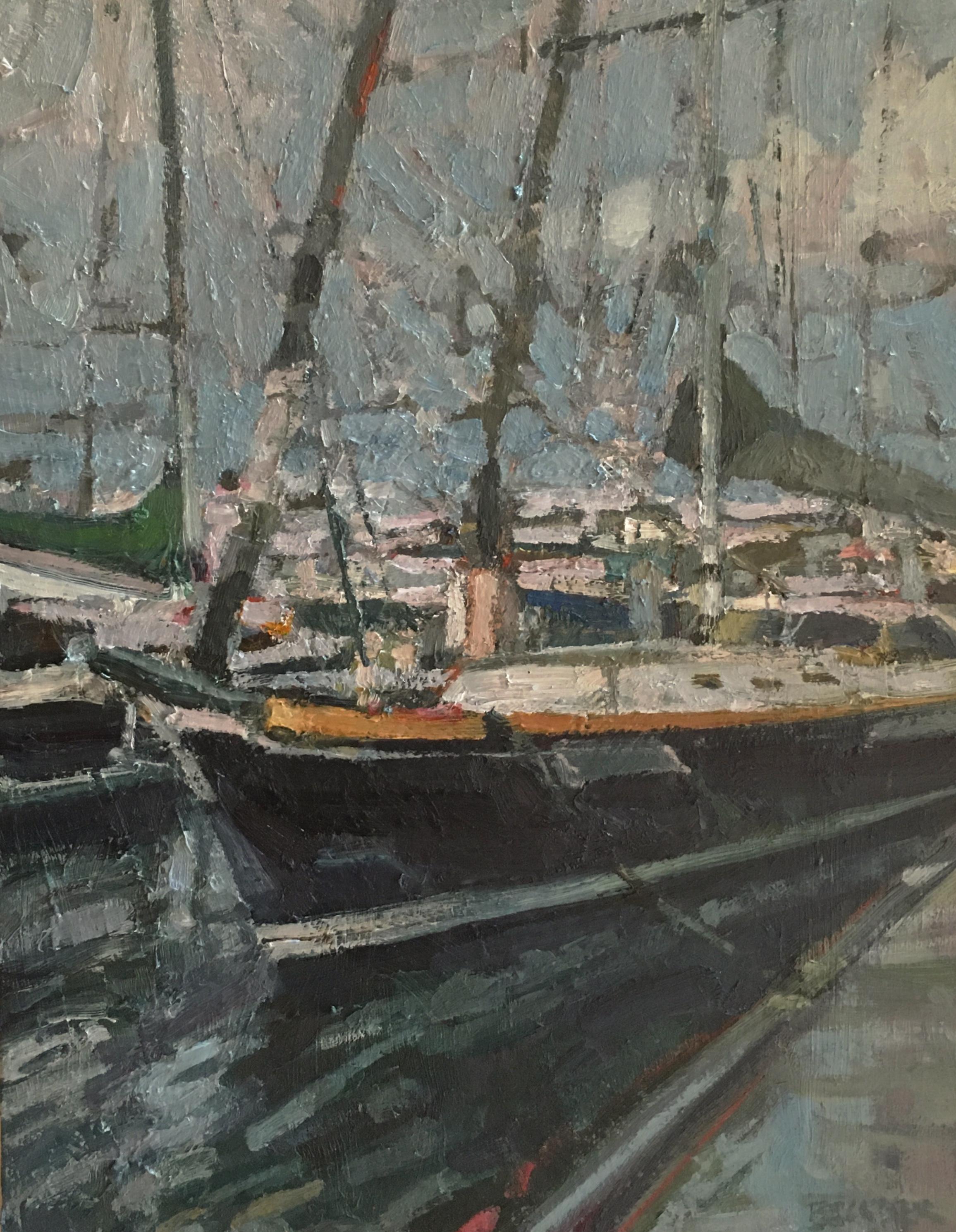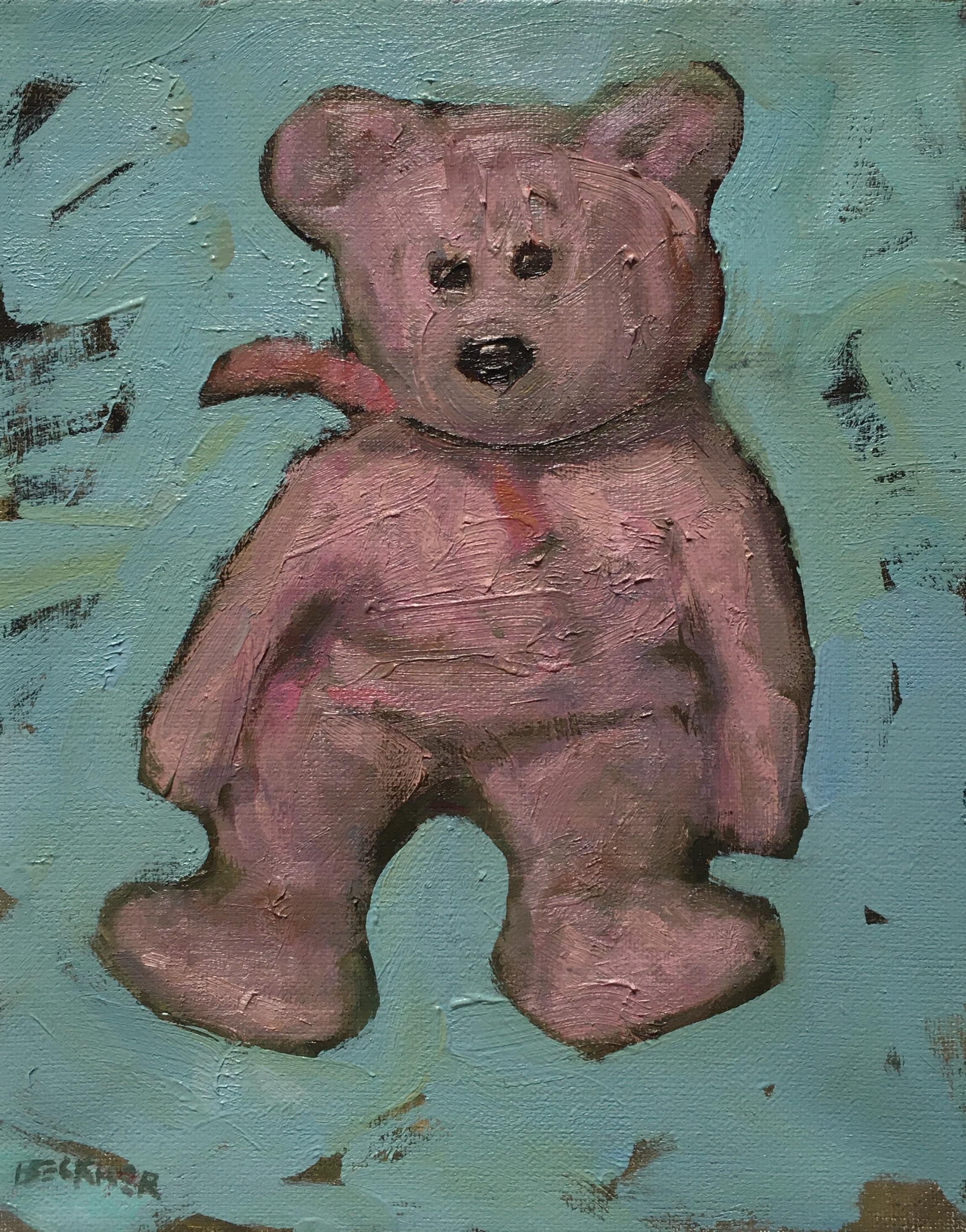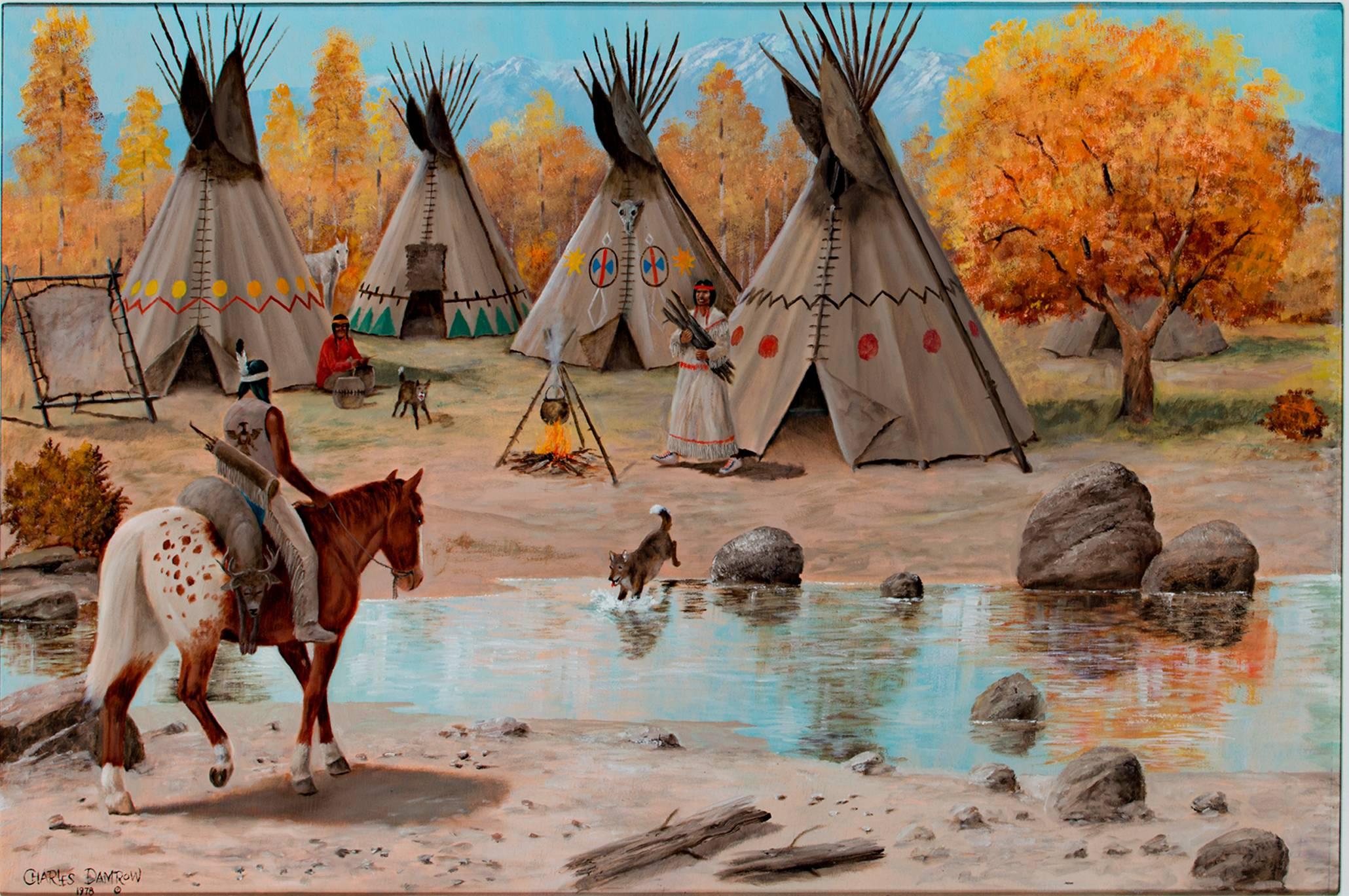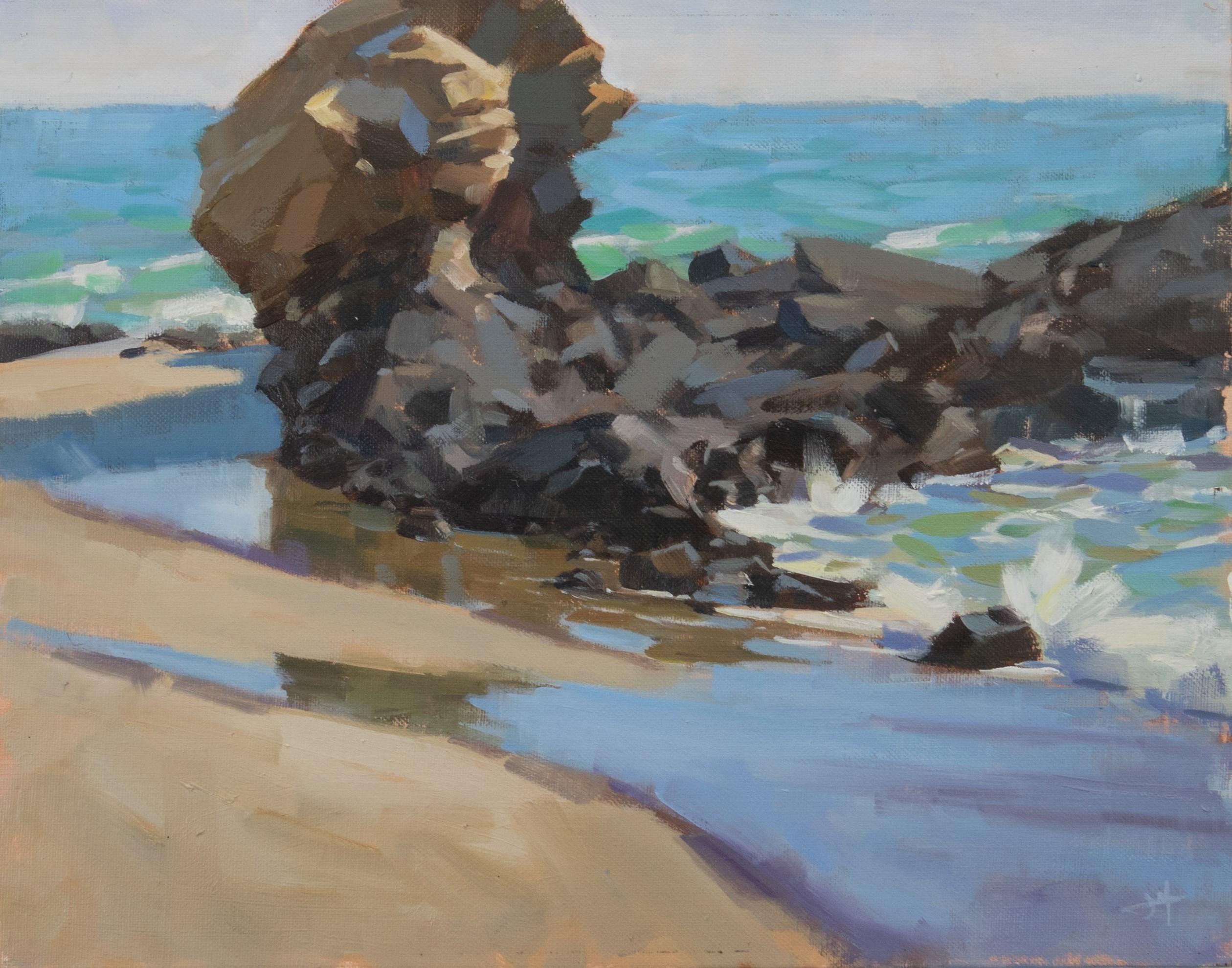Items Similar to Lobster Fishermen
Want more images or videos?
Request additional images or videos from the seller
1 of 13
Claude Curry BohmLobster Fishermenc.1945
c.1945
About the Item
This artwork titled "Lobster Fishermen" c.1945, is an oil painting on canvas by renown American impressionist artist Claude Curry Bohm, 1894-1971. It is signed at the lower left corner by the artist. The canvas size is 20 x 24 inches, framed size is 26.25 x 30.25 inches. Framed in a new wooden gold leaf plein air style frame. It is in excellent condition, it has been recently revarnish and new keys have been added to the canvas stretcher. Please note the the dark line on the top and left side of the painting are only the shadow, it is not a part of this artwork.
About the artist:
Claude Curry Bohm, a photographer, painter, and printmaker whose artistic career spanned five decades, was an integral part of the Chicago art scene in the 1920s and a very prominent part of the second generation of the Brown County, Indiana art colony from his first visit in 1920 until his death, serving as a charter member of the Brown County Art Gallery Association and helping to transform “Brown County into one of the nation’s outstanding art colonies.”
The short, blonde-haired, gray-eyed Curry inherited some of his penchant for paints from his father Robert W. Bohm, a noted portrait, mural, and scenery painter whose family hailed from Louisiana where he was born in 1868 in New Orleans. Between 1886 and 1900, the elder Bohm was associated with Robert L. Struve as a stage set painter for New Orleans theatres such as the St. Charles Theatre and the Academy of Music and for musical venues in Mobile, Alabama.
In addition, they decorated floats and other artwork for carnival parades, including Mardi Gras. Bohm’s mother, Pauline Ogier (sometimes Oger), was born in either 1874 or 1878 in Louisville, Kentucky where her parents had settled after emigrating from France; her father was French, her mother Swiss. How and where Bohm’s parents met has yet to be established but they married around 1894, when she was either twenty or sixteen years old and he was twenty-six; Curry was born soon thereafter. Bohm’s birth has been recorded as taking place in Nashville, Tennessee on October 19, 1894, which would have been two days before his maternal grandfather, Claud Ogier, was buried in Louisville, Kentucky.
According to the 1900 United States Census, Bohm was born in August 1895 in New Orleans, Louisiana. Curry was raised in New Orleans for the first several years of his life in a home on Mandeville Street with a studio for his father near Washington Square not far from the French Quarter, in the 2nd Precinct, 8th Ward, Orleans Parish, New Orleans. Here he watched his father paint and, as he recalled later in life, had his own first adventures with paint and brush.
After the early death of his father at the age of 32 in 1901, a “readjustment of the family affairs became necessary and Curry was brought to Louisville” where his mother had family. He attended primary and secondary school in the city, living there for at least fifteen years. In 1913, eighteen-year-old Curry met fifteen-year-old Lillian Harrington at a New Year’s Eve party and just over seven months later the two eloped, fabricating facts on their marriage license in Clark County, Indiana to be wed. This appears to be when and how Curry Bohm became Claud (Claude) Curry Bohm, adopting his first name from his maternal grandfather. At the time of their marriage, Curry listed his occupation as cable splicer; he was eventually employed as a pressman for Fetters printing house in Louisville and he continued in this trade after the couple moved to Chicago around 1916.
Shortly after settling in Chicago and finding employment at the Lincoln Printing Company, the Bohms relocated for a year to Buffalo, New York, where Curry’s mother was living; Lillian was concerned about the draft. During this visit, or a previous one, Curry visited the Albright Art Gallery, now the Albright-Knox Art Gallery in Buffalo and either here, or at another venue, he saw an exhibition of pictorial photography. This experience inspired him to take up the camera, an art which he practiced for several years after the couple returned to the Windy City.
From the late 1910s to 1932 the Bohms lived and worked primarily in Chicago and Curry became a prominent part of the city’s artistic community. During these years Bohm worked for various printing companies including the Lincoln Printing Company and W. P. Dunn Company and he and Lillian lived in the Bucktown and Ravenswood neighborhoods. Though his work week must have been quite demanding, Bohm found time to indulge his artistic interests and was drawn to painting and photography.
It does not appear that Bohm was a formal student at the Art Institute of Chicago or the National Academy of Design in New York as some reports have indicated. From 1922 to at least 1928 Bohm belonged to the Chicago Business Mens Art Club, an organization of non-professional artists founded by Elbert G. Drew and Erwin S. Barrie, among others. The club was “strictly an amateur organization” open to “men thirty years or over who are not following art as a livelihood and are seeking more art knowledge.” The objective of the group was “to encourage the study and practice of painting and the kindred arts among its members and to co-operate with societies aiming to broaden the appreciation of art in our city and elsewhere.” Monthly meetings were held where members received criticisms from professional artists and there was also weekly evening instruction from Karl A. Buehr and Edward J. Timmons with some members, like Bohm, taking outdoor sketching classes from the latter as well. Eventually the Art Institute of Chicago supplied the group with “a class room and lockers, a meeting place and the use of the library.” The club held occasional exhibitions, had summer cottages for outdoor work near local lakes and rivers, and eventually had its own club rooms and studio.
Bohm was also active in the Chicago Camera Club from at least 1922 when he exhibited with the group at the Art Institute of Chicago, to around 1926; he served as secretary of the group for the 1925-26 season. In 1926, Bohm became a member of the Palette & Chisel Club (later named the Palette and Chisel Academy of Fine Arts) and remained a member for decades. He had a studio at the club for two years and exhibited at the clubhouse frequently, winning a gold medal in 1931.
Bohm’s affiliation with Indiana began around 1920 when he first visited the Peaceful Valley of Brown County. He exhibited at the Hoosier Art Gallery in Chicago and showed regularly at the Hoosier Salon in both Chicago and Indianapolis from 1928 until his death. Over the years Bohm won numerous awards from the Hoosier Salon including the Edward Rector Memorial, the Lawrence A. Downs Prize, Daughters of Indiana of Chicago Award, and the Summer Landscape Prize. He also won prizes from the Indiana Artists’ Club and the Brown County Art Gallery.
After visiting Nashville annually for several years, the Bohms moved there in 1932 and eventually became permanent residents. Bohm was a charter member of the Brown County Art Gallery Association and also served as president, vice-president, and director of the Brown County Art Guild. During his years in Nashville, Bohm also was a mentor and teacher to many aspiring painters. Bohm exhibited regularly throughout lifetime at the Palette & Chisel Club, the Hoosier Salon and various galleries in Illinois, the Hoosier Salon, Indiana Artists’ Club, Brown County Artists Guild, and galleries in Indiana, at the North Shore Art Association and Rockport Art Association in Massachusetts, and elsewhere. His most prestigious accolade came from the selection of his painting The Grey Blanket to represent the state of Indiana in the show of Contemporary Art of the United States from the collection of International Business Machines at the Golden Gate International Exposition in San Francisco in 1940. Claud(e) Curry Bohm died in Nashville, Indiana on November 18, 1971.
Selected museums and galleries:
Indianapolis Museum of Art
Indiana State Museum
Illinois State Museum
Brauer Museum of Art
Swope Art Museum
Eskenazi Museum of Art, Indiana University
Evansville Museum
Figge Art Museum
Brown County Art Gallery
Brown County Art Guild
Tri Kappa Art Collection at Rose-Hulman Institute of Technology
Indiana Memorial Union Art Collecti
Art Institute of Chicago
Corcoran Gallery of Art
Smithsonian American Art Museum
Indianapolis Museum of Art
Figge Art Museum
Illinois State Museum
Evansville Museum
Brown County Art Gallery
- Creator:Claude Curry Bohm (1894 - 1971, American)
- Creation Year:c.1945
- Dimensions:Height: 26.25 in (66.68 cm)Width: 30.25 in (76.84 cm)Depth: 1.25 in (3.18 cm)
- Medium:
- Movement & Style:
- Period:
- Condition:
- Gallery Location:San Francisco, CA
- Reference Number:
About the Seller
5.0
Platinum Seller
These expertly vetted sellers are 1stDibs' most experienced sellers and are rated highest by our customers.
Established in 1999
1stDibs seller since 2017
688 sales on 1stDibs
Typical response time: 1 hour
- ShippingRetrieving quote...Ships From: San Francisco, CA
- Return PolicyA return for this item may be initiated within 7 days of delivery.
More From This SellerView All
- Untitled, Two people in the fieldBy Edna HibelLocated in San Francisco, CAThis artwork "Untitled, Two People in the Field" c.1970, is an oil painting on canvas by American artist Edna Hibel, 1917-2014. It is signed at the lower left corner by the artist. The canvas size is 30 x 40 inches. It is in good condition, It has been recently revarnished. About the artist:Edna Hibel, a painter of sentimental pictures of children, has had a more than 60-year career as painter and lithographer and promoter of peace through exhibitions of her artwork. She was born in 1917 in Boston, Massachusetts. Her parents were Abraham and Lena Hibel, and she was raised in the Boston area and educated at Brookline High School where she met her future husband, Theodore Plotkin. She began to paint when she was nine years old and learned watercolor during summers at the shore where her family vacationed in Maine and Hull, Massachusetts. Hibel studied at the Boston Museum School of Fine Arts, from 1935-39, receiving a Sturtevant Traveling Fellowship to Mexico. In Boston, in 1966, she began lithography, continuing in 1970 in Zurich, where she still works every year. She has created lithographic works with up to 32 stones (or colors) on paper, silk, wood veneer and porcelain. The latter pieces are called lithographs on porcelain and result from a complicated process, that she keeps a secret, whereby she transfers stone lithographic color separations onto Bavarian hard paste porcelain. Hibel has created the "Arte Ovale" series and various plaques with this technique. She organized the Edna Hibel Museum of Art, in Jupiter, Florida, to display and promote her work and also created a United Nations stamp, "Mother Earth." In 1995, she was commissioned by the Foundation of the U.S. National Archives to commemorate the 75th anniversary of women receiving the universal right to vote. At the ceremony, Ms. Lucy Baines Johnson referred to Hibel as the "Heart and Conscience of America." In November, 2001, the World Cultural Council based in Mexico City gave her the Leonardo da Vinci World Award of Arts. Hibel's work has been exhibited in museums and galleries in more than 20 countries including Russia, Brazil, China, Costa Rica, and the United States, and under the royal patronage of Count and Countess Bernadotte of Germany, Count Thor Bonde of Sweden, Prince and the late Princess Rainier of Monaco and Her Majesty Queen Elizabeth II of England. Pope John Paul II gave her a medal of honor as did the late Belgian King Baudouin. She also received honorary Doctoral degrees including from Eureka College, and Northwood University of Florida, Michigan and Texas. She also has received many humanitarian honors for her charitable efforts for children's and medical charities. Her exhibitions "Golden Bridge" and " Peace Through Wisdom" were efforts to promote peace and cultural understanding between China, the United States, Yugoslavia and Russia, and a television documentary titled "Hibel's Russian Palette" was based on her trips and art shows in Leningrad, now St. Peter...Category
Late 20th Century American Impressionist Figurative Paintings
MaterialsOil
- Spring Flow (Lake Tahoe)Located in San Francisco, CAThis artwork titled "Spring Flow (Lake Tahoe)" 2016 is an oil painting on canvas by noted American artist Andrew (Andy) Skaff, b.1945. It is signed at the lower right corner by the a...Category
21st Century and Contemporary American Impressionist Landscape Paintings
MaterialsOil
- Fallen Leaf IIILocated in San Francisco, CAThis artwork titled " Fallen Leaf III" 2015 is an oil painting on canvas depicting the Lake Tahoe area by noted American artist Andrew (Andy) Skaff, b.1945. It is signed at the lower...Category
21st Century and Contemporary American Impressionist Landscape Paintings
MaterialsOil
- Seaview, Fire Island, New York, Sand Dunes, Ocean SideLocated in San Francisco, CAThis artwork titled "Seaview, Fire Island, New York, Sand Dunes, Ocean Side" 1956, is an oil painting on canvas board by Italian/American artist Xavier Barile, 1891-1981. It is signed at the lower right corner by the artist. Also signed, dated, and titled on the back. The canvas board size is 12 x 16 inches, framed size is 22 x 26 inches. Framed in an ornate wooden gold frame, with black velvet liner. It is in generally excellent condition, the frame have some minor restorations, barely visible and 2 small area where the velvet is scratched. About the artist: Xavier J Barile was a Social Realist painter, teacher, lecturer, graphic artist, and writer. He was born March 18, 1891, in Tufo, Italy. His love of beauty manifested itself at a very early age. During his early teens, he used to design monograms for the young girls of his home town, Tufo, Italy, to embroider on their most precious possession, their hope chest and trousseau. In 1907, his mother brought him, his two younger brothers and two sisters to New York, to join their father who had been in New York for several years, preparing the way. He quickly learned English and spent some time helping his father, who was earning a living for the family as a tailor. Having learned English well, Barile then enrolled in the Evening Art Classes at Cooper Union Institute in New York. In due course he enrolled in the Art Students League, New York City. Here he came under the influence of John Sloan, Reginald Marsh and Victor Perard as teachers and George Luks, Robert Henri and Everett Shinn of "the Eight" as friends and colleagues. In 1939 John Sloan dedicated his book, Gist of Art as follows, "To my old friend, first monitor of my first class at the Art Students League 1914." This friendship and mutual regard lasted until Sloan's death in 1951. Of course, it was only natural that Barile should be a part of the "Ashcan School," painting the New York Scene. During this time that he was on his own he worked with all mediums - oil, watercolor, pastel, casein, charcoal, etc. - and he did some fine work with monotypes. It was during these years, the 20's and 30's, that he began to exhibit in such places as the Whitney Studio Club (forerunner of the Whitney Museum of American Art), The Kit Kat Club, The Anderson Gallery, The Cincinnati Museum, The New Mexico Museum, National Society of Painters in Casein, The Salmagundi Club and many other exhibits throughout the United States. He is currently represented in The National Collection of Fine Arts (NCFA) Smithsonian Institution, Washington, D.C. In the mid 30's, like many another struggling artist, XJB worked on the WPA Art Project. One of the murals he worked on is in the U.S. Customs House, Bowling Green, N.Y.C. In this project he collaborated with Reginald Marsh who was the supervisor of this phase of the work. The years until 1939 were spent working in all parts of the United States and in conducting his own classes for aspiring artists. In 1939, on the recommendation of John Sloan, he became the founder, first teacher and Chairman of The Department of Fine Arts, Pueblo Junior College, Pueblo Colorado...Category
Mid-20th Century American Impressionist Landscape Paintings
MaterialsOil
- Landscape with SnowLocated in San Francisco, CAThis artwork "Landscape with Snow" c.1970 is an oil painting on hard board by noted California artist Robert Wee, 1927-2021. It is signed at the lower right...Category
Late 20th Century American Impressionist Landscape Paintings
MaterialsOil
- Red Pick UpLocated in San Francisco, CAThis artwork titled "Red Pick up" c.1970 is an oil painting on hardboard by American artist John Schweikhard, b.1938. It is signed and titled on the back. The ...Category
Late 20th Century American Impressionist Figurative Paintings
MaterialsOil
You May Also Like
- "The Dutch" Plein Air with Figures & Cars Impressionistic Oil Painting on BoardBy Cindy ShaoulLocated in New York, NY"With shades of Pierre Bonnard’s Parisian street vistas and Edward Hopper’s New York shopfronts, American impressionist Cindy Shaoul’s oil paintings depict the much-loved locales and...Category
2010s American Impressionist Landscape Paintings
MaterialsBoard, Oil
- "Dock" Oil PaintingBy Jim BecknerLocated in Denver, COJim Beckner's (US based) "Dock" is an oil painting that depicts a sailboat and other boats in the distance docked and crowded together. Artist statement: Jim Beckner’s art vibrate...Category
2010s American Impressionist Figurative Paintings
MaterialsOil
- "Green I" Oil PaintingBy Jim BecknerLocated in Denver, COJim Beckner's (US based) "Green I" is an oil painting that depicts a dense lush forest and shrubbery with just a slice of sky peeking from behind the branches. Artist statement: J...Category
2010s American Impressionist Figurative Paintings
MaterialsOil
- "Pink Bear" Oil PaintingBy Jim BecknerLocated in Denver, COJim Beckner's (US based) "Pink Bear" is an oil painting that depicts a small pink bear toy with a light blue background Artist statement: Jim Beckner’s art...Category
2010s American Impressionist Figurative Paintings
MaterialsOil
- Native American Nature Village Community Western 1970's Animals Seasons SignedBy Charles DamrowLocated in Milwaukee, WI"Teepee/Indian Village" is an original oil painting on wood panel by Charles Damrow. The artist signed and dated the piece in the lower left. This paint...Category
1970s American Impressionist Landscape Paintings
MaterialsOil, Wood Panel
- "Under the Table, " Oil paintingBy Judd MercerLocated in Denver, COJudd Mercer's (US based) "Under the Table," is an original, handmade oil painting that depicts blue waves crashing on the shore of a sandy beach with boulders. About the Artist: Judd Mercer is a watercolor painter based in Denver, Colorado. After attending art school for industrial design, Judd pursued a career in digital design and user experience and is co-owner of Elevated Third, a Denver-based digital agency. After committing to writing and illustrating a full-length fantasy novel in his spare time, Judd began watercolor painting around 2014, studying with teachers such as Alvaro Castagnet, Joseph Zbukvic and Herman Pekel...Category
2010s American Impressionist Landscape Paintings
MaterialsOil
Recently Viewed
View AllMore Ways To Browse
The Lobster
American Drew Mid Century
Vintage Club International
Claude Home
Chicago Exposition
Vintage Studio Camera
Vintage Father Daughter
Vintage Club Library
Retro Music Artwork
French Louisiana
Vintage Chicago Street Sign
Vintage Camera Paintings
Salon Style Set Of Art
Lobster Art
Mens Club
Vintage Watch Gallery
Chicago Street Scene
Old Vintage Saws
